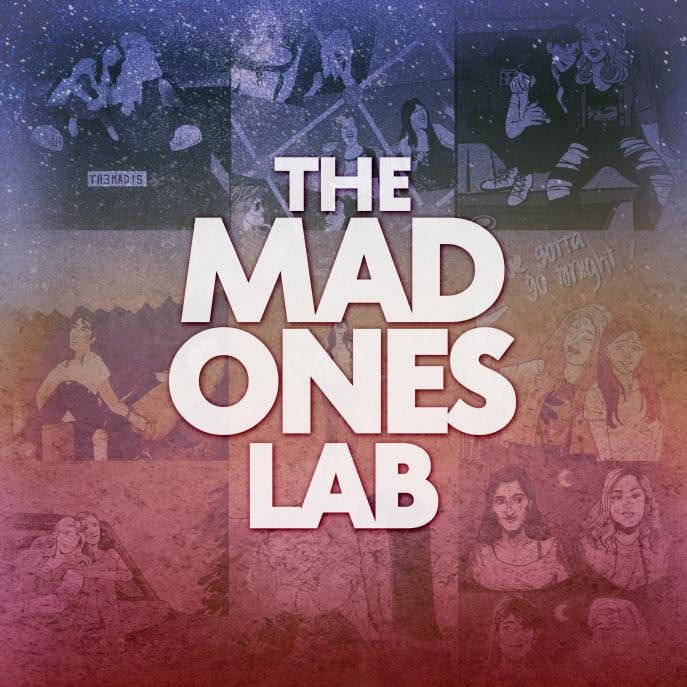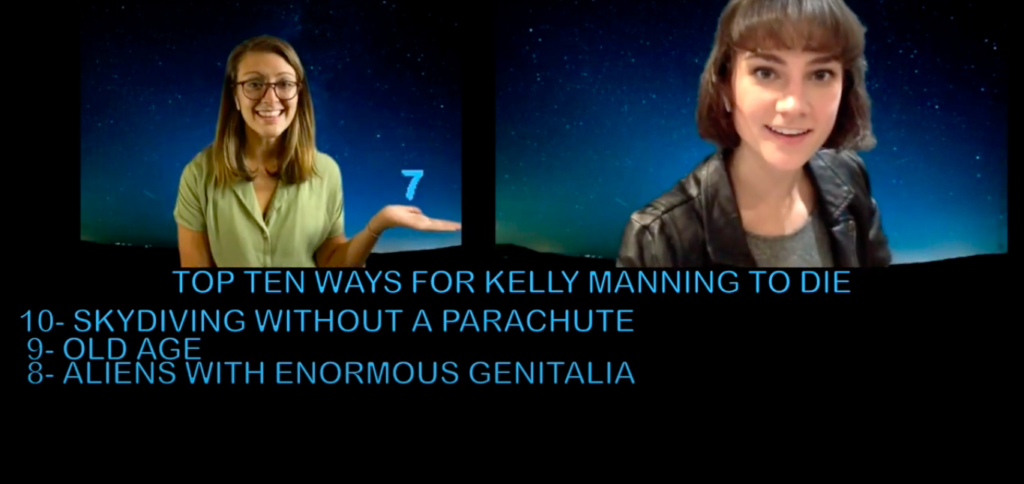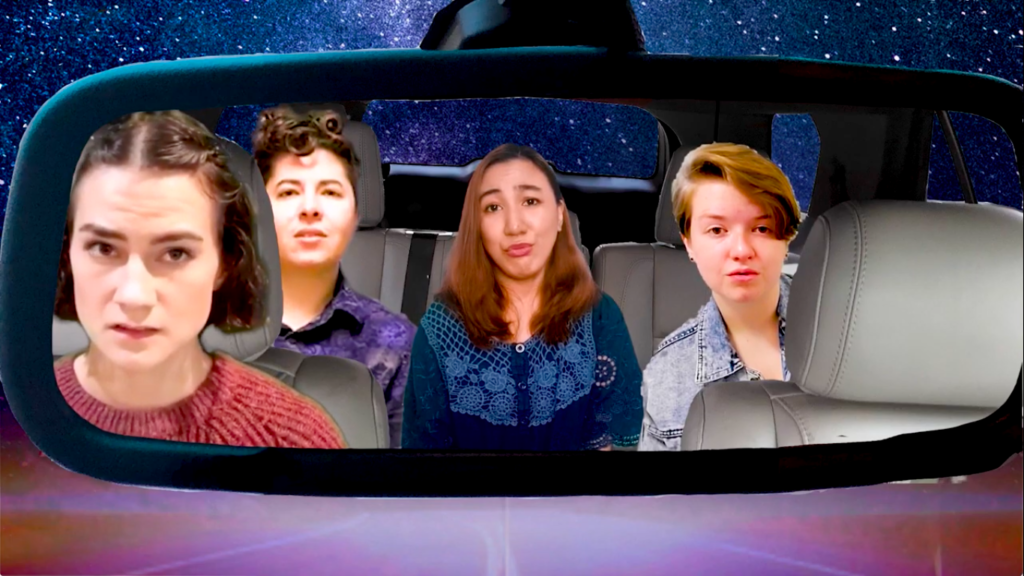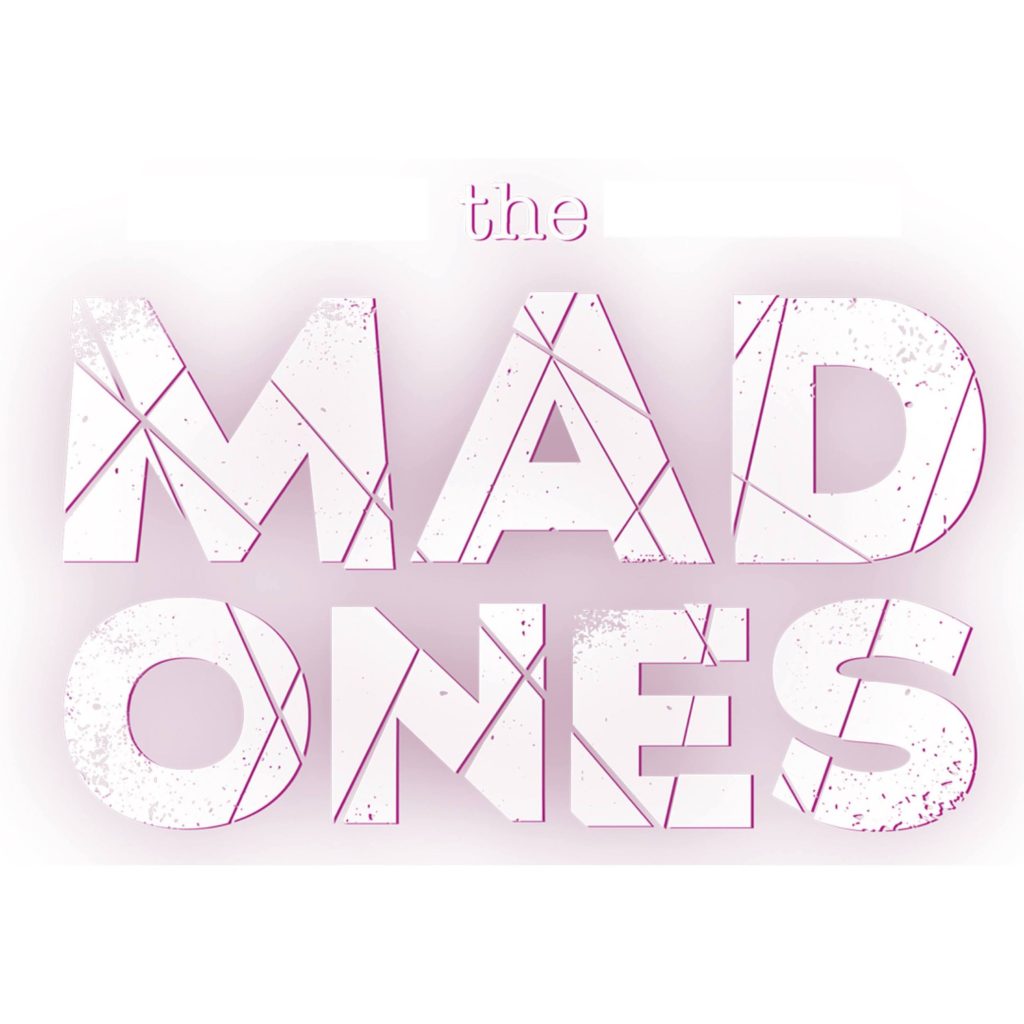Almost a month into the new year… Broadway remains closed, and Regional theaters slowly announce a potential summer 2021 season, but so much is still unknown. The world of virtual theatre during the pandemic has been quite interesting, to say the least. I navigated sound and video, which I’d really never worked with before. And working with the technicalities of Zoom and other online platforms, was a huge learning experience. I’ve dabbled in recording and editing sound on Audacity, creating videos with iMovie, you name it! Although it has been fun, it is something I never expected to be doing.
In this new world of virtual theatre, I have been able to be a part of a handful of projects. Each one is a new adventure.

The Mad Ones Lab
All truths are valid. Speak in draft. No Apologies; Only Gratitude. Shine Where You Shine at AND Try New Things!
These are just a few of the community guidelines from the team behind The Mad Ones Lab.
In October, I was fortunate enough to be a part of Kait Kerrigan and Brian Lowdermilk’s virtual Lab of their musical, The Mad Ones. With the show was split into 20 sections of 15 minutes or less, artists from all over the world worked to create a 15 minute piece of the show. There were over 250 creators in the Lab from all over the world. In the US from Los Angeles to New York, all the way to the Philippines and Japan!
I had gotten very disconnected from the theatre community since the shutdown in March, and I hadn’t realized it. As a performer, one of my favorite things is connecting with a cast, and creating a performance that can connect with an audience. Although, now with virtual live streams, the connections theatre brings are not present in the same way.
How do we create live theatre when we can’t physically be together?
I was a part of two groups during the Lab, and explored several possibilities of remote theatre. The first director I got to work with was Corey Ragan. He directed Section 5: “Top Ten”, in which I played the role of Kelly. Our section operated entirely over Zoom. We rehearsed on and even recorded our videos through Zoom with a great virtual background by Corey.

Every person in our group was in a different state. One of the most difficult parts of working on a musical over Zoom, was the audio lag that was present no matter what. It became nearly impossible to sing a duet without a few second delay between each singer and the music. We decided to pre-record our audio for the song separately, and sing along by ourselves with our microphones on mute. This proved to be the most effective way for us to be able to get real time reactions. We were able to ‘act’ as if we were really singing together.
Corey then pieced all of our videos together to look like one live Zoom stream. He even had characters videos pop in and out as if they were entering and exiting a scene.
Is pre-recorded virtual musical theatre still ‘live’ theatre?
Many different members and panelists in the Lab posed this question. Ultimately, I don’t know the answer this. I don’t think a lot of performers have really come to a conclusion, either. Even Actor’s Equity and SAG-AFTRA struggled with the new concept of theatre becoming entirely virtual. The two Unions were in a disagreement for a period of time over who had jurisdiction over certain projects.
If it is filmed, it should be SAG, but if i’ts a stage production it’s Equity right? Well what about a filmed stage production?
For a while, it was unclear. There were even union members in the Lab that had to be sure they had proper permissions to participate. Since then, Equity and SAG have come to an agreement as Unions with certain guidelines in place. You can see Playbill’s article about that here.
But, the question still remains for performers, or for me at least.
I still don’t know what I think specifically qualifies as live theatre when it’s being recorded for release. There have been many musicals filmed on stage and later released, like Hamilton on Disney +. This production was clearly filmed live. There was no editing in post for different takes, and scenes, that would happen for a movie or TV show. This way of filming theatre still feels very “live” to me.
Shine Where You Shine at AND Try New Things!
Section 17 “Drive”, seemed a bit less ‘theatrical’ to me and more towards what a film would entail. Instead of being on Zoom with another cast member or director for this section, I was filming completely by myself. And again, singing along to a pre-recorded audio track.

The entire concept by this director, Ashleigh David, was quite different as well. She had us use different filming angles and heights, and inserted each of our individual videos into the backdrop of a car! It was quite the filming and editing project. It definitely felt less “live” to me as a performer because I was all alone and could film as many times as I needed to. I also did not have to film the entire song from beginning to end. I changed the angles of the camera for different segments, and this was a main factor in it not feeling like a live performance at all.
This was a totally different experience, than even performing with someone over Zoom. It felt much more like creating a film or TV show, where I had tons of short takes, that were pieced together later.
Dare To Be Changed.
The final rule of the community guidelines in the Lab.
I have grown so much as an artist through this pandemic: Adventuring into the world of virtual theatre, evaluating my goals as a performer, and honing my craft even if everything is in front of a screen or camera.
All in all, the world of virtual theatre is changing and adapting as we continue to deal with the Pandemic. It’s sad to see Broadway shows that were billed to re-open after the shutdown, have since been cancelled completely. The need for the arts to come back alive is very strong. I feel it as a performer of course. The culture and comfort that the performing arts brings is severely missed.
It’s clear with the number of online readings and performances of different capacities that artists are doing just to create something with one another again. It’s clear in the overwhelming response to projects like the Ratatouille: The Tik Tok Musical. We need the arts to come back.
As incredible and innovative online projects have been, I do not believe they will ever fill the void of live performances entirely. We will come back stronger than ever when we’re able!
Just like music artists have continued to sell-out concerts even with every song available to stream – I know for certain that live theatre will come back full force as soon as it is safe to do so.
Until then, I am thankful for projects like The Mad Ones Lab, for allowing me to create and connect with fellow artists.
To watch one or more of over 2 billion versions of The Mad Ones from the Lab check out the engine here.

AND… a huge thank you to all the organizers!
Kait Kerrigan, Brian Lowdermilk, Liz Fisher; Artistic Director, Rachel Karp; Conversations Coordinator, Alexis Scott, Kate Lumpkin, and all the other speakers, panelists and collaborators that made this Lab an incredible experience.
